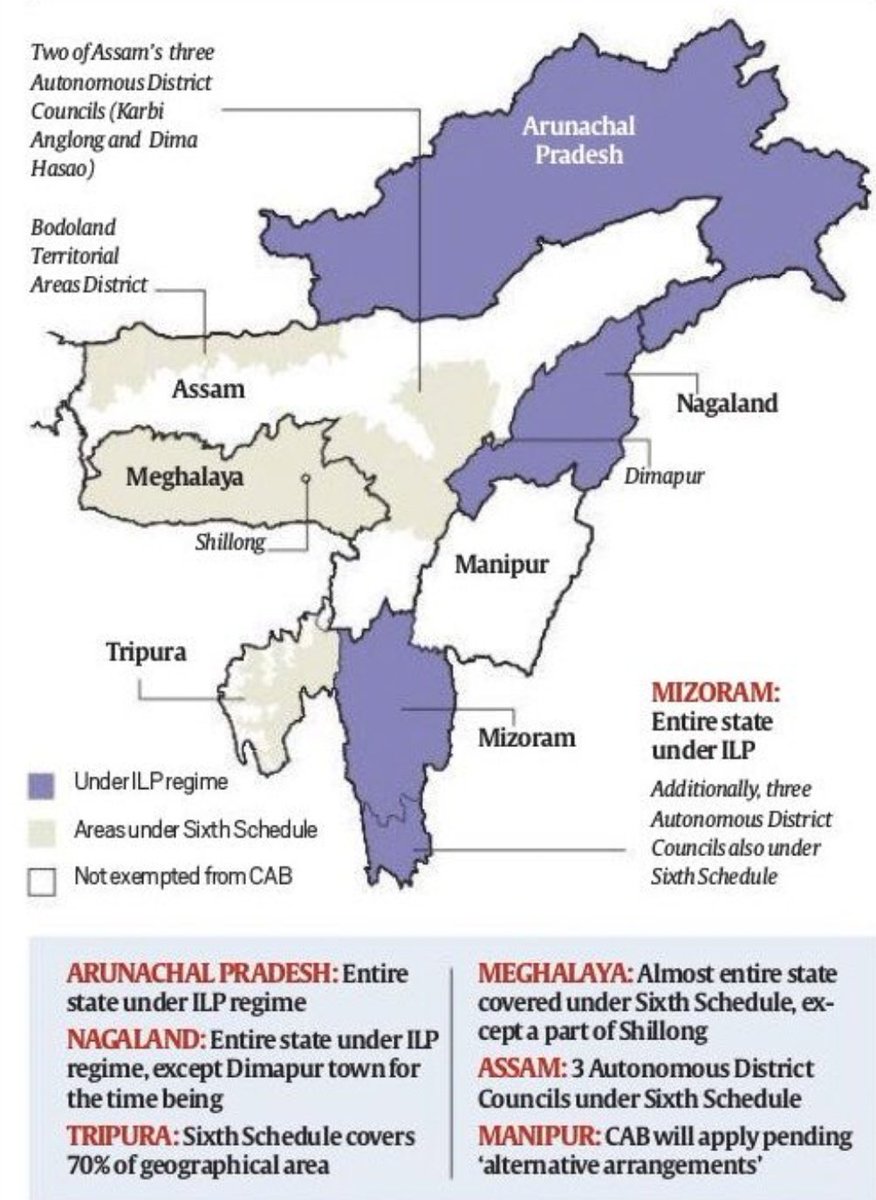Clause 6 of Assam Accord
Relevance: Prelims/Mains: G.S paper II: Polity: Governance

Why in News
Recently, a Ministry of Home Affairs appointed committee on implementation of Clause 6 of the Assam Accord has proposed a definition for ‘Assamese people’ in its report.
- The 14-member committee, headed by the High Court judge Biplab Kumar Sarma was set up in 2019 following widespread protests against the Citizenship Amendment Act, 2019.
Key Points

- Assam Accord:
- It was a tripartite accord signed between the Government of India, State Government of Assam and the leaders of the Assam Movement in 1985.
- The signing of the Accord led to the conclusion of a six-year agitation that was launched by the All Assam Students’ Union (AASU) in 1979, demanding the identification and deportation of illegal immigrants from Assam.
- It sets a cut-off of midnight of 24th March 1971, for the detection of illegal foreigners in Assam.
- However, the demand was for detection and deportation of migrants who had illegally entered Assam after 1951.
- Clause 6 of the Accord:
- It says that constitutional, legislative and administrative safeguards, as may be appropriate, shall be provided to protect, preserve and promote the cultural, social, linguistic identity and heritage of the Assamese people.
- The committee chaired by Biplab Kumar Sarma was constituted to define ‘Assamese People’ and institute safeguards for them.
- Recommendation of the Committee:
- Definition of Assamese: The report proposes January 1951 as the cut-off date for any Indian citizen residing in Assam to be defined as an Assamese for the purpose of implementing Clause 6.
- Reservation for Assamese: The report seeks reservation for Assamese in Parliament, state assembly, local bodies. It recommended creating an Upper House (Legislative Council of Assam) whose seats will be reserved for the ‘Assamese people’.
- The report also seeks quotas in government jobs.
- Regulation of Outsiders: The report recommends regulation of entry of people from other states into Assam, which include the implementation of an Inner Line Permit (ILP) regime in the state.

- The ILP is a system in which a special permit is required by people from other regions of India to visit the state.
- Currently the ILP is applicable in Manipur, Arunachal Pradesh, Nagaland and Mizoram.
- Other Rights: The report also talks about issues related to land and land rights, linguistic, cultural and social rights and protection of the state’s resources and biodiversity.
- Issues Involved:
- According to the recommendations, people who migrated between 1951 and 1971, including large sections of post-Partition refugees, would be Indian citizens under the Assam Accord and the National Register of Citizens (NRC), but they would not be eligible for safeguards meant for “Assamese people” under Clause 6 of the Accord.
- East Bengal migrants who entered Assam before 1951 would be considered Assamese.
- There is no mechanism to prove that a person has been in Assam prior to 1951.
- The 1951 NRC is not available in several parts of the state and the current NRC being made uses 1971 as a cut-off.
Way Forward
- The key legal and constitutional issue that needs to be considered is whether the definition of an Assamese or a Bengali or a Punjabi or a Tamil define her/his Indian-ness or an Indian citizenship.
- The definition of Assamese is connected to the NRC process as the Assam Accord cannot be reviewed in isolation of one clause or the other.
For more such notes, Articles, News & Views Join our Telegram Channel.
Click the link below to see the details about the UPSC –Civils courses offered by Triumph IAS. https://triumphias.com/pages-all-courses.php

